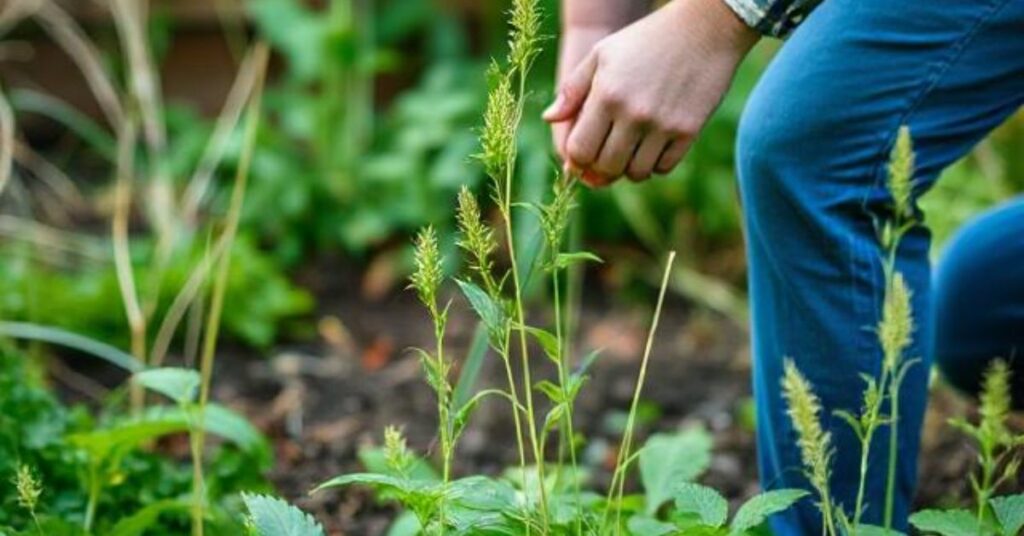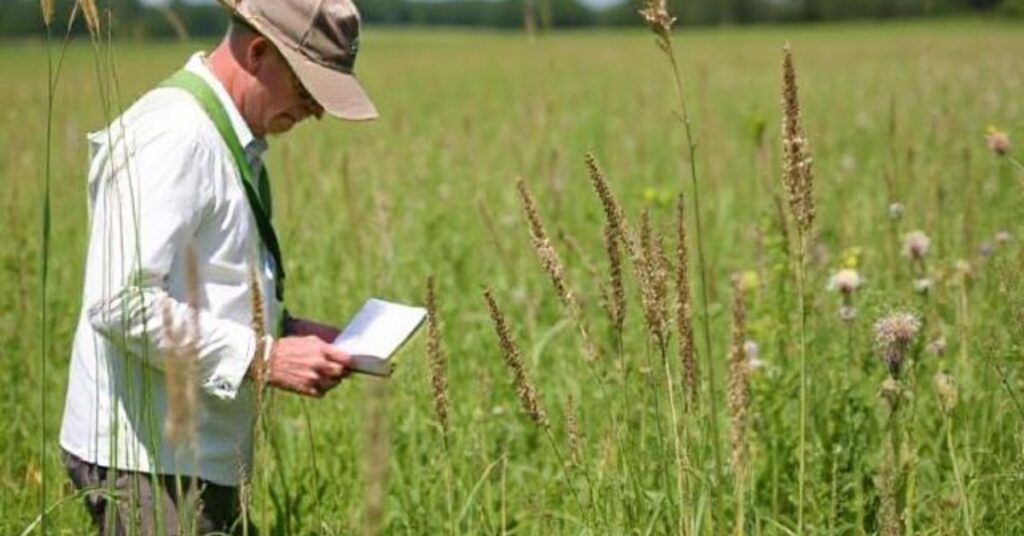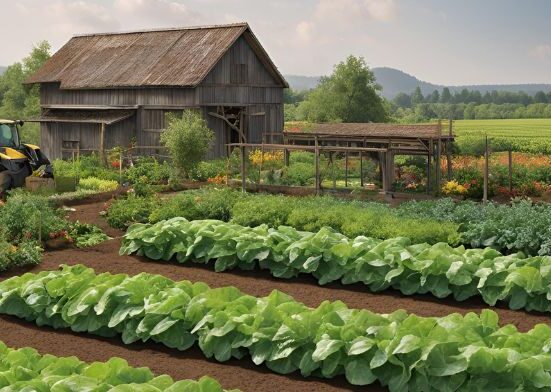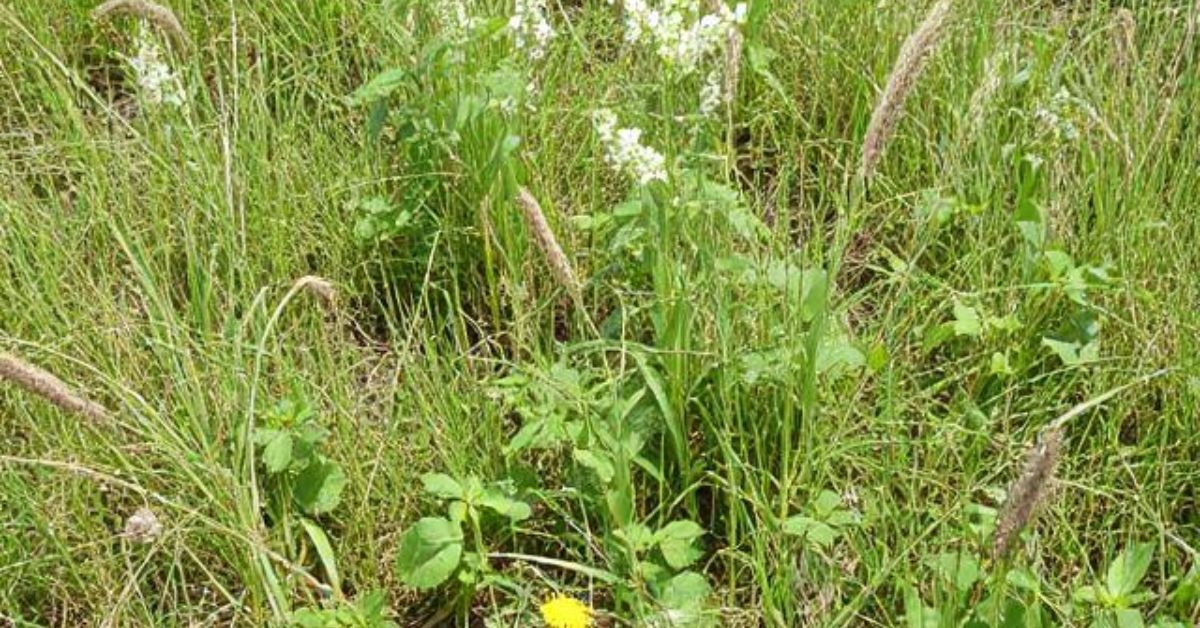Every gardener understands how frustrating it can be to deal with these pesky plants, which pop up overnight and compete with your vegetables, flowers, and shrubs for vital nutrients, sunlight, and water. Left unchecked, weeds can quickly take over your garden, choking out your desired plants and creating a messy, unkempt appearance. More importantly, they can harbor pests and diseases that threaten the health of your entire garden ecosystem.But the good news is—you can take control. Weed management doesn’t have to involve endless hours of back-breaking labor or harmful chemicals. You can significantly reduce weed problems and keep your garden thriving with the right strategies.
In this blog post, we’ll cover 10 proven weed surveys and management strategies that are practical, effective, and garden-friendly. These techniques combine prevention, control, and innovative gardening practices to help you stay ahead of weeds while promoting a healthier, more productive garden.
Regardless of your level of gardening experience, these tips will provide you with the knowledge and abilities you need to maintain a beautiful, weed-free space. Ready to reclaim your garden from weeds?
1. Mulching: Your First Line of Defense
Mulching is one of the simplest and most effective strategies for controlling weeds in your garden. Mulch blocks the soil’s surface from receiving sunlight. which hinders the germination and growth of weed seeds. Additionally, it aids in retaining soil moisture. regulate soil temperature, and improve overall soil health—a win-win for your plants!Mulch comes in two primary varieties: inorganic and organic. Natural mulches include straw, wood chips, shredded leaves, grass clippings, and compost. These break down over time, enriching the soil with valuable nutrients. Inorganic mulches, including gravel, landscaping cloth, black plastic, offer longer-lasting weed control but don’t improve soil fertility.
For best results, apply a 2-4 inch mulch layer around your plants, allowing a tiny space between stems to prevent rot. The Complete Beginner’s Guide to Drip Irrigation Replenish organic mulch periodically as it decomposes.Mulching is especially effective when combined with other weed control methods. It not only suppresses weeds but also enhances the appearance and health of your garden. With minimal effort, you’ll reduce the time spent weeding and create an environment where your plants can thrive.

2. Hand Weeding: The Classic but Effective Method
Sometimes, the simplest methods are still the most effective—and hand weeding is a perfect example. Though it may seem old-fashioned, pulling weeds by hand remains one of the best ways to keep your garden free of unwanted plants, especially when done regularly and correctly.
The key to successful hand weeding is timing. The best time to weed is after a rain or watering session, when the soil is moist and weeds can be easily pulled out, including roots. Removing weeds before they flower and set seeds is crucial to prevent future growth.
The task can be made easier with the correct tools. and more efficient. Tools like a hand hoe, weeding fork, or dandelion digger help loosen the soil and remove deep-rooted weeds without disturbing surrounding plants. Be sure to remove weeds, including their roots, to prevent regrowth.
While hand weeding requires effort, it allows you to target weeds precisely without harming nearby plants or the environment. Incorporating this method into your routine—spending just a few minutes daily—can drastically reduce weed problems and keep your garden looking its best.
3. Proper Plant Spacing
Believe it or not, how you space your plants plays a significant role in weed control. Proper plant spacing helps create a natural barrier against weeds by reducing the open areas where weeds can establish themselves. When plants are spaced correctly, their leaves form A canopy that provides shade to the soil hinders the growth of weed seeds to get the sunlight they need to grow.Many gardeners make the mistake of leaving too much space between plants, thinking it allows for better air circulation or room to grow. However, leaving significant gaps invites weeds to take hold.
Instead, follow the recommended spacing guidelines for each type of plant, considering their mature size and growth habits.Additionally, you can use ground covers or companion plants to fill in gaps and further suppress weeds. Low-growing plants like clover, creeping thyme, or sweet alyssum spread quickly and provide excellent weed control while adding beauty and biodiversity to your garden.Carefully planning and adjusting plant spacing will reduce weed growth and improve your garden’s overall health and productivity. Healthy, well-spaced plants naturally outcompete weeds and require less maintenance over time.
4. Crop Rotation & Garden Bed Rotation
Crop and garden bed rotation are time-tested techniques for maintaining soil health and effective weed management.Changing the crops that are cultivated in each garden bed every season disrupts the life cycles of adjust weed management strategies that tend to thrive under certain conditions or with specific crops.Weeds often adapt to particular crops, soil conditions, and planting patterns. When the same crop is grown in the same spot year after year, it gives weeds a consistent environment in which to flourish. Rotating crops confuses weeds, making it harder for them to establish and reproduce.
A good crop rotation plan typically involves cycling between heavy feeders (like corn or tomatoes), light feeders (like carrots or onions), and soil builders (like legumes or cover crops). This not only reduces weed pressure but also improves soil fertility and structure.In addition, consider rotating entire garden beds or planting cover crops during off-seasons to suppress weeds further. Cover crops such as rye or clover can outcompete weeds while enriching the soil.By incorporating crop and bed rotation into your gardening routine, you’ll create a dynamic, less predictable environment—making it much more challenging for weeds to take over.
5. Soil Solarization: Harnessing the Sun’s Power
Soil solarization is an environmentally friendly and highly effective method of controlling weeds using the sun’s heat. This technique involves covering moist For a few weeks during the hottest season, cover the soil with a clear plastic sheet. The plastic traps the sun’s rays, heating the soil to temperatures that kill weed seeds, seedlings, and even harmful soil-borne pests and pathogens.To get started, first, prepare the soil by tilling and removing any large debris or existing weeds. Water the soil thoroughly, as moisture helps conduct heat deeper into the ground. Then, lay clear plastic sheeting tightly over the soil surface, securing the edges with soil, rocks, or stakes to prevent heat escaping.

Leave the plastic in place for 4-6 weeks, depending on weather conditions and climate. During this time, the temperature beneath the plastic can reach up to 130°F (54°C), effectively sterilizing the top layer of soil.Soil solarization helps prepare new garden beds or heavily infested areas. While it requires some planning and patience, it offers long-term weed control without chemicals, leaving your soil clean and ready for healthy planting.
6. Use of Cover Crops
Cover crops are an excellent natural strategy for managing weeds while improving soil health. Often referred to as “green manure,” these fast-growing plants are explicitly sown to cover bare soil, preventing weeds from taking hold. By occupying space and using available nutrients, covering crops effectively outcompetes weeds, making it difficult for unwanted plants to establish.Popular cover crops include clover, rye, buckwheat, alfalfa, and vetch. Each offers additional benefits beyond weed suppression—such as fixing nitrogen, improving soil structure, and attracting beneficial insects. For instance, winter rye grows quickly, providing dense coverage that blocks sunlight and shades out weeds.
Legumes like clover can enrich the soil with nitrogen while keeping weeds at bay.
To use cover crops, Flood Irrigation Pros and Cons plant them during the off-season or between crop rotations. Once they mature, you can either mow them down and leave them as mulch or till them back into the soil to decompose, adding organic matter.Incorporating cover crops into your gardening routine creates a healthier, more balanced ecosystem. Not only do they control weeds naturally, but they also contribute to long-term soil fertility and structure—making your garden more productive season after season.
7. Applying Pre-Emergent Herbicides (Natural & Synthetic)
Pre-emergent herbicides are effective in weed management, targeting weeds before they sprout. Unlike post-emergent herbicides, which kill existing weeds, pre-emergent options create a barrier in the soil that stops weed seeds from germinating. This preventive approach is ideal for controlling annual weeds that appear seasonally.Both synthetic and natural pre-emergent herbicides are available. Synthetic products like Prodiamine or Pendimethalin are commonly used in lawns and larger garden areas. They’re highly effective but should be applied carefully, following label instructions, to avoid harming desirable plants.
Consider natural pre-emergent herbicides like corn gluten meal for a more eco-friendly option. Corn gluten inhibits seed germination and provides a nitrogen boost to the soil. It’s safe for organic gardening but must be applied at the right time—just before weed seeds germinate, usually in early spring or fall.
Timing and proper application are key to success. Apply pre-emergent herbicides to bare soil, followed by light watering to activate the product.Adding pre-emergent herbicides to your weed management strategy can drastically cut down on the quantity of weeds that ever grow, saving you time and effort in the long run.
8. Drip Irrigation to Target Watering

An extremely effective method of watering that targets the roots is drip irrigation. of plants, delivering water directly where it’s needed most. One of the lesser-known benefits of drip irrigation is its ability to help manage weeds. Focusing water on the base of plants reduces the moisture available in surrounding soil areas, making it harder for weeds to thrive.Weeds typically grow in areas where there is excess moisture. Traditional overhead watering systems tend to wet large portions of the garden, providing favorable conditions for weeds to sprout. In contrast, drip irrigation minimizes water waste and prevents moisture from reaching dormant weed seeds.
In addition to its weed-control benefits, drip irrigation helps conserve water, promote healthy plant growth, and reduce the spread of diseases by preventing water from splashing onto plant foliage. It’s perfect for garden beds, rows of crops, or even container gardening.To set up a drip irrigation system, purchase pre-made kits or design your system using tubing, Top Tips For Better Surface Irrigation Systems emitters, and connectors. Once in place, you’ll notice a significant decrease in weed growth and a healthier, more productive garden overall.
9. Flame Weeding for Hard Surfaces & Pathways
Flame weeding is highly effective and environmentally friendly for controlling weeds, especially in areas like driveways, garden pathways, and between patio stones. This technique uses heat to destroy the cellular structure of weeds, causing them to collapse and die without chemicals.A flame weeder typically consists of a propane torch attached to a long handle, which directs a controlled flame at weeds. Instead of completely burning the weeds, the objective is to expose them to enough heat to cause the cell walls to rupture. Within a few hours, the weeds will begin to wilt and die.
Flame weeding works best on young, tender weeds that haven’t yet developed deep roots. It is particularly effective on non-vegetated areas like gravel paths, driveways, and fences where traditional weeding methods can be complex. However, Flood Irrigation Pros it’s essential to be cautious when using this method in areas with dry grass or flammable plants.Although flame weeding doesn’t prevent new weed seeds from germinating, it provides a quick and efficient way to control visible weeds without chemicals, making it a great addition to an integrated weed management strategy.
10. Regular Garden Maintenance & Vigilance
One of the most effective strategies for controlling weeds is simply staying on top of your garden maintenance. Regular attention and vigilance can prevent small weed problems from growing into larger ones, saving you time and effort in the long run.Frequent inspections of your garden, at least once a week, will help you catch weeds early before they can spread and establish deep roots. Hand-pulling weeds, while still small, is much easier than dealing with established plants. This also prevents weeds from going to seed and spreading throughout your garden.
In addition to weeding, keeping your garden well-maintained by removing dead plant matter, turning the soil, and pruning overgrown plants is essential. This ensures that your plants have plenty of space to thrive and that weeds don’t find easy growth opportunities.Being proactive in your maintenance creates an environment where weeds struggle to survive. Sustainable Irrigation Incorporating this regular check-in into your gardening routine will help you stay ahead of weeds, promote plant health, and keep your garden neat and beautiful year-round.
Conclusion
Weed management doesn’t have to be a daunting task. Implementing a combination of proactive strategies can lessen the growth of weeds and make your garden healthier and more fruitful. From mulching and hand weeding to crop rotation and cover crops, each method contributes to a more sustainable and effective approach to weed control. Tools like drip irrigation and flame weeding add an extra layer of efficiency, while pre-emergent herbicides offer a preventive solution when used wisely.
Consistency and attention to detail are essential for long-term success.
Regular garden maintenance is essential to stay ahead of weeds before they have a chance to take root. Combined with other methods, this ongoing attention ensures that weeds don’t stand a chance in your garden.Using these 10 proven strategies, you can create an environment where your plants thrive, your soil keeps weeds at bay, and remains healthy. These pointers can help you have a lovely, weed-free garden with less work and more happiness, regardless of your level of gardening experience.Are you ready to regain control of your garden? Now is the time to put these suggestions into practice and observe how your plants flourish!
FAQ
1. What is the best time to pull weeds by hand?
Pulling weeds is most effective when the soil is damp. , such as after a rain or watering. This makes removing weeds, including their roots, easier without disturbing the surrounding soil too much.
2. How often should I mulch my garden?
You should refresh your mulch every 6-12 months or whenever it starts to decompose or thin out. Adding a 2-4 inch layer of mulch ensures effective weed control, moisture retention, and improved soil health for your plants.
3. Can I use pre-emergent herbicides in organic gardening?
Indeed, a natural pre-emergent herbicide that can be used is corn gluten meal, which is used in organic gardening. It prevents weed seed germination while enriching the soil with nitrogen, making it a safe alternative to synthetic herbicides.
4. How long should I leave the plastic on for soil solarization?
For four to six weeks, cover the soil with clear plastic. during the year’s hottest months for effective soil solarization. The plastic traps heat, sterilizing the top layer of soil and killing weed seeds and pests.
5. Does drip irrigation reduce weed growth?
Drip irrigation targets water directly at plant roots, minimizing moisture in surrounding areas. This reduces conditions favorable for weeds, as they rely on excess moisture to grow. It also conserves water and promotes plant health.







